The post 10 Easy Ways to Improve Your Dog’s Diet by Martha M. Everett appeared first on Dogster. Copying over entire articles infringes on copyright laws. You may not be aware of it, but all of these articles were assigned, contracted and paid for, so they aren't considered public domain. However, we appreciate that you like the article and would love it if you continued sharing just the first paragraph of an article, then linking out to the rest of the piece on Dogster.com.
It’s probably the most common New Year’s resolution: Lose weight. Turns out, that’s one of the best resolutions we can make for our dogs, too. While most human resolutions fail by February, resolving to improve your dog’s diet is one you can — and should — keep.
“If we want more time with our pets, it’s so critical to keep them trim,” says Deborah Linder, DVM, research assistant professor at Tufts University’s Cummings School of Veterinary Medicine in North Grafton, Massachusetts.
Studies show that keeping your dog lean can increase life span by as much as two years and delay the onset of chronic disease. A pound or two extra on a human isn’t much, but that can be a big percent of a dog’s body weight.
Here are 10 simple things you can do to improve your dog’s diet in 2020 and beyond.
Be Balanced
A complete and balanced diet should make up 90% of what your dog eats every day. Commercial pet foods are formulated to provide the more than 30 essential nutrients dogs need.
If you feed a homemade diet, make sure it meets your dog’s daily requirements for vitamins, proteins, minerals, fats and other nutrients.
“Pet owners need to recognize that they are the only source of nutrition for their animals,” says Martha Cline, DVM, a board-certified veterinary nutritionist at Red Bank Veterinary Hospital in Tinton Falls, New Jersey. “We don’t eat a balanced diet every single day, but we have the ability to do that for our pets.”
Don’t Be A Drive-By Feeder
Measure your dog’s food at mealtime rather than filling the empty bowl every time you pass, says Joe Bartges, DVM, Phd, a nutrition professor at the University of Georgia College of Veterinary Medicine in Athens. Portion control is key in preventing obesity, the No. 1 health threat for dogs.
Feeding suggestions on packages are guidelines. “The bag is a place to start, but it may have to be adjusted based on the individual pet,” Dr. Cline notes.
Follow The 10% Rule
No more than 10% of your dog’s total daily calories should come from treats, table foods, chews and supplements.
Make a list of the calories in those extras to create a treat-allowance menu. “That’s your freebie time,” says Dr. Linder, a veterinary nutrition specialist and diplomate of the American College of Veterinary Nutrition (ACVN).
Count Calories
Ask your veterinarian how many calories your dog should eat daily. In general, dogs need about 20 to 30 calories per pound.
“Sometimes people don’t realize how many calories they’re actually offering,” Dr. Cline says.
Counting calories doesn’t have to mean feeding less. For example, one rawhide chew can have as many as 100 calories, but two cups of fresh green beans — a great source of vitamins and fiber — have only about 60 calories.
Try saving a portion of your dog’s kibble and feeding it as treats throughout the day as a way to provide a complete and balanced diet without adding calories.
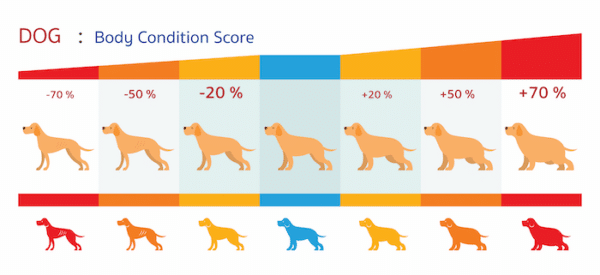
This image is just one example of the body weight chart that your vet may show you to help you understand where your dog falls in weight. The scale can vary — one to five, one to seven, etc. — depending on who created the chart. It usually shows both the side and view from above.
Get Your Dog’s Numbers
Ask your veterinarian for your dog’s body condition score. The BCS is a rating based on a visual assessment of shape. Scale numbers vary, but some work on a scale of 1 to 9 with a score of 4 to 5 being ideal.
“When you look at them from above, you want to make sure that they have a waist after their ribs,” Dr. Cline says. “When you look at them from the side, you want to make sure they have an abdominal tuck.”
Periodically feel your dog’s ribs just behind the front legs. “It’s so hard to just look at a dog, especially a Husky or one that’s really fluffy; they can be deceiving,” Dr. Linder says. The ribs should have no more padding than the bones on the back of your hand.
Weigh Your Dog
Weigh your pet every few months, recommends Dr. Bartges, a diplomate of the ACVN. Subtle changes are difficult to see, and weight gain can creep up.
To shed pounds (and keep them off ), you have to commit to regular exercise. “We’re not going to burn off a Snickers bar just by walking to the mailbox, and our dogs aren’t either,” Dr. Linder says.
Read Labels
Before buying anything your dog will ingest, check the label. Note the target life stage, ingredients, nutritional information and calories.
That includes supplements. Fish oil, for example, has about 40 calories per teaspoon. While supplements usually do not list calories on the label, there are clues. “If you look at a label and you see protein and fat listed, there are going to be calories,” Dr. Cline advises. When in doubt, call the company.
Think Like A Dog
Imagine someone gives you beets, and if you don’t eat them, he hands you cake. You might hold out the next time you get beets. That’s the same conditioned response a dog develops when we offer a treat if he doesn’t eat his food.
“The owner is training that pet not to eat that food anymore because the pet is going to know that if I just wait, I’m going to get something of higher value,” Dr. Cline says.
Often the higher-value food is a table scrap. And that can be a vicious circle. “If you give a lot of table foods, it might fill them up, and then they’re not hungry to eat their regular diet,” Dr. Cline warns.
Think in dog scale. “Most dogs don’t need to eat anywhere near the amount of calories that we eat,” Dr. Cline says.
Dr. Linder agrees. “That piece of chicken may be 20 calories, which is nothing to us, but that could be 10% of a Chihuahua’s daily needs,” she says.
Always Provide Clean, Fresh Water
Keep an eye on how much your dog drinks (too much or too little can signal a medical issue). To encourage water intake, freeze your dog’s favorite toy or treat in water and let him lick the frozen cube. Homemade broth also is a good source of hydration (though commercial broths can be high in sodium).
Change Things Up
Rotating complete-and-balanced pet foods keeps mealtimes interesting for your dog. Dr. Barges suggests feeding dry and wet foods of varying flavors from different pet-food companies. Part of his thinking: Variety can dilute any issues that might develop with one company’s food.
Helpful Tools + Resources
The World Small Animal Veterinary Association offers body condition score and calorie-needs charts: wsava.org/Guidelines/Global-Nutrition-Guidelines.
Tufts University’s Cummings Veterinary Medical Center provides information on dog food and nutrition: vetnutrition.tufts.edu
HOLIDAY TIP: Bountiful food is a gift of the holidays. But many are poisonous to dogs, including chocolate, macadamia nuts, grapes, raisins, onions, garlic, caffeine, alcohol and the sugar substitute xylitol.
Keep these foods out of your dog’s reach, and know the phone numbers for your veterinarian, a local animal emergency clinic and the ASPCA Animal Poison Control Center (888-426-4435)
The post 10 Easy Ways to Improve Your Dog’s Diet by Martha M. Everett appeared first on Dogster. Copying over entire articles infringes on copyright laws. You may not be aware of it, but all of these articles were assigned, contracted and paid for, so they aren't considered public domain. However, we appreciate that you like the article and would love it if you continued sharing just the first paragraph of an article, then linking out to the rest of the piece on Dogster.com.
Poop4U Blog
via www.Poop4U.com
Martha M. Everett, Khareem Sudlow

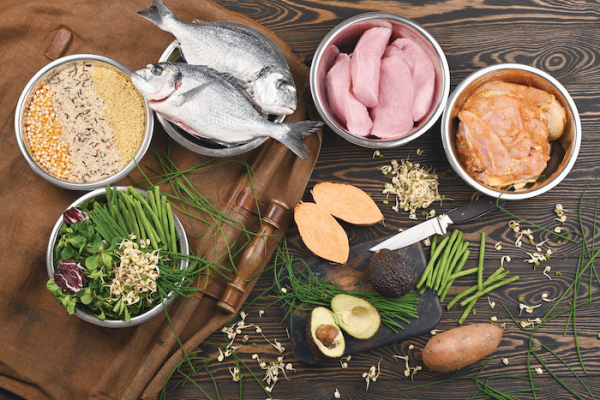
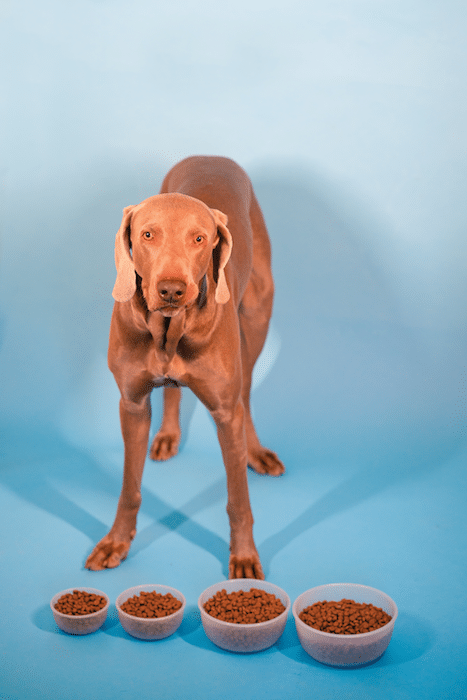
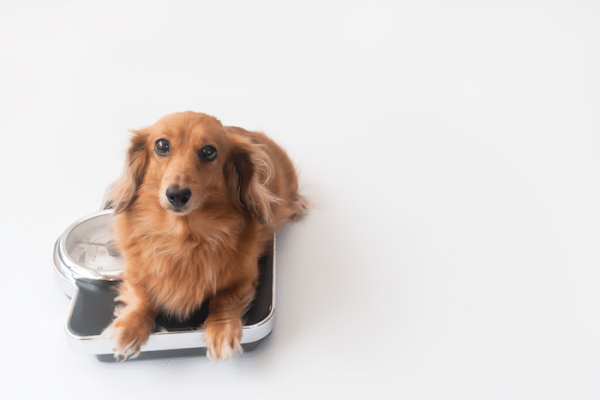
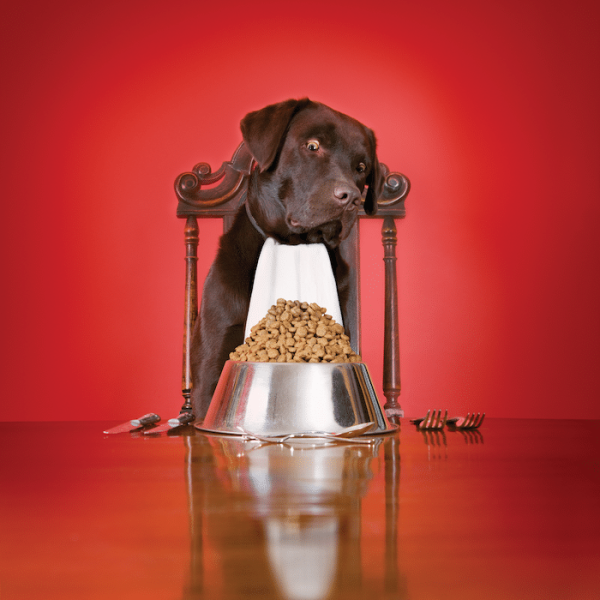
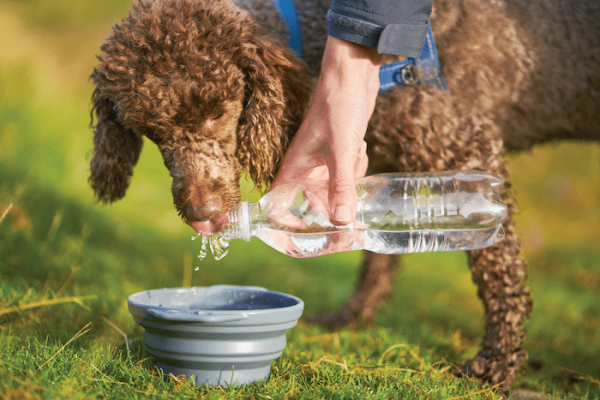
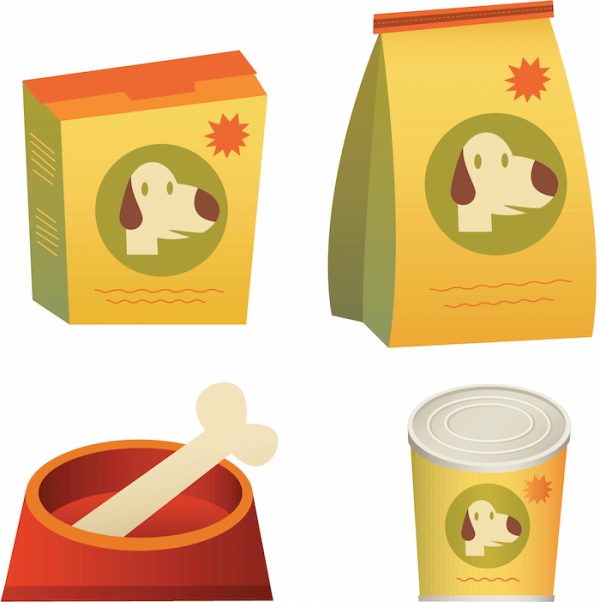

No comments: